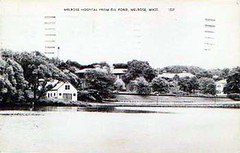Using Literature with English Language Learners (ELL) in ESL TEFL TESOL Teaching
Professor Colin MacCabe of the University of Exter School of English says that to truly know a language, you must know something of the literature of a language.
Literature is intellectually stimulating because a book allows a reader to imagine worlds they are not familiar with. This is done through the use of descriptive language. In order to understand, the reader will create their vision of what the writer is saying. In this sense, the reader becomes a performer or an actor in a communicative event as they read.
Using literature versus a communicative textbook (conversational English) changes the learning approach from learning how to say into learning how to mean (grammar vs. creative thinking). Conversation-based English programs tend to provide lessons that focus on ‘formulas’ used in contextual situations so there is little allowance for independent thought and adaptation of language by naturally speaking. On the other hand, literature-based programs focus on personal interpretation of the language so students begin to experiment with the language and incorporate this into their everyday speech and vocabulary. This experimentation can be especially helpful to the students for use in different subjects such as science.
Per Carter and Long, the 3 main approaches to using Literature in a language classroom are:
1. Cultural model
– Based on the notion that literature is the expression of:
* Socio-cultural attitudes.
* Aspirations of individual societies.
* Mythic and universal values.
– Text is regarded as finished product.
– Associated with teacher-centered approach
2. Language model
– Literature is taught for the
